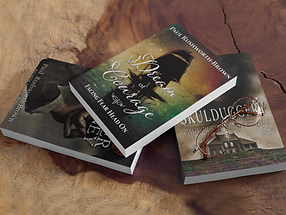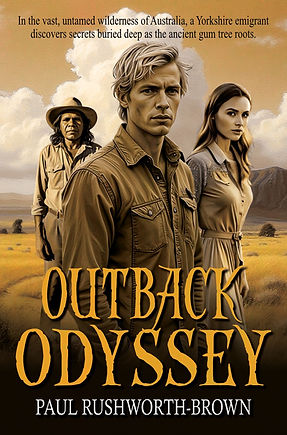Transforming the English Countryside: The Impact of Enclosure
- Paul Rushworth-Brown

- Apr 27, 2024
- 3 min read
Updated: May 30, 2024

Transforming the English Countryside. Back in the day, farming was pretty scattered, with everyone tending to their own bits of land in big open fields. But around the 12th century, things changed. They started combining these scattered pieces into larger fields that individuals could own or rent. This idea caught on during the Tudor times because it seemed like a smarter way to farm.

Initially, they just sort of did this through informal agreements. But as time went on, especially in the 17th century, they began getting official permission from Parliament. Sometimes it was landowners looking to make more money, and other times it was farmers trying to improve their land.
By the 1750s, getting Parliament's approval became the norm. Over about three centuries, from 1604 to 1914, Parliament passed over 5,200 laws about enclosing land in England, affecting about a fifth of the country's total area, which is roughly 6.8 million acres.
This shift to enclosing land really revved up farming productivity starting in the late 18th century. More land became available for farming, but it also changed how the countryside looked. Instead of those vast open fields, you started seeing hedges and fences dividing things up, and the old boundaries vanished. But historians can't agree on whether this change pushed the poorest rural folks, the farm workers, out of the countryside for good, driving them to find work in the towns.
Enclosure, or the fencing off and privatizing of land, drastically reshaped the English countryside and the lives of its people. Before this practice gained momentum, peasants had access to common-use land for various activities like grazing and small-scale farming. But as landowners sought to consolidate their holdings, enclosure became widespread, particularly during the Georgian era.

Enclosure Acts, passed by Parliament, formalized this process, often in response to petitions from private citizens. While some enclosures aimed to prevent unauthorized land use, others disrupted longstanding communal spaces.
The consequences of enclosure were profound. Peasants, who once relied on common land for sustenance, found themselves forced into wage labor as access to land became restricted. This influx of laborers played a key role in driving the Industrial Revolution.

Critics argue that enclosure primarily benefited the wealthy, who amassed more land and power at the expense of the less privileged. However, proponents suggest that enclosure led to greater land efficiency and increased social mobility in the long run.
While some areas suffered from overuse and degradation, not all enclosures were attempts to salvage depleted land. Motivations varied, from economic interests to property rights protection.
Ultimately, whether seen as a necessary step in England's economic development or as a means of elite consolidation, enclosure transformed the English countryside and the working classes.
England, 1642. When bloody civil war breaks out between the King and Parliament, families and communities are driven by different allegiances. Red Winter Journey is a sweeping tale of adventure and loss, sacrifice and love, with a unique and unforgettable story of a mother’s love for her son at its heart. A historic journey of twists, turns and a dash of spirited passion. https://py.pl/5iQSOgvk1zF
Set in Haworth, a family of Yorkshire peasants in 1590, live each day in isolation from the village, but an attack on one of their own puts them all in grave danger. This story carefully navigates the backdrop of the English Reformation, populating it with likable and despicable characters, and casting them in a fully realised historical mystery setting. It's a slice of history that's totally, utterly believable, and unbelievable. The twists will surprise and the ending is totally unexpected even for the most astute of readers. Read it for free online https://bit.ly/3WSYAsh and read the reviews https://bit.ly/3mMj0GG https://py.pl/Vx8EG
Young Robert Rushworth and John Rushworth leave home and stumble across a way to make their fortune, in the Briggate in Leeds. Pursued by John Wilding, a brogger and brute of a man, with no manners or decorum, typical of the ‘lower sort’ of the time. Smythe, the local tavern keeper, has many secrets and with a hidden past, sends Robert to The Haven, to Captain Girlington of 'The Pearl'. Will Robert escape before it's too late? Will he hang? Will Robert and Ursula ever be together? https://py.pl/1Bt3cc





.png)

.png)


.png)
.png)



.png)






Young Robert Rushworth and John Rushworth leave home and stumble across a
way to make their fortune, in the Briggate in Leeds. Pursued by Jacob Wilding, a brogger and brute of a man, with no manners or decorum, typical of the ‘lower sort’ of the time. Smythe, the local tavern keeper, has many secrets and with a hidden past, sends Robert to The Haven, to Captain Girlington of 'The Pearl'. Will Robert escape before it's too late? Will he hang? Will Robert and Ursula ever be together? Find out more here: https://bit.ly/3M52Y4g or instant download https://amzn.to/3G2JNoo